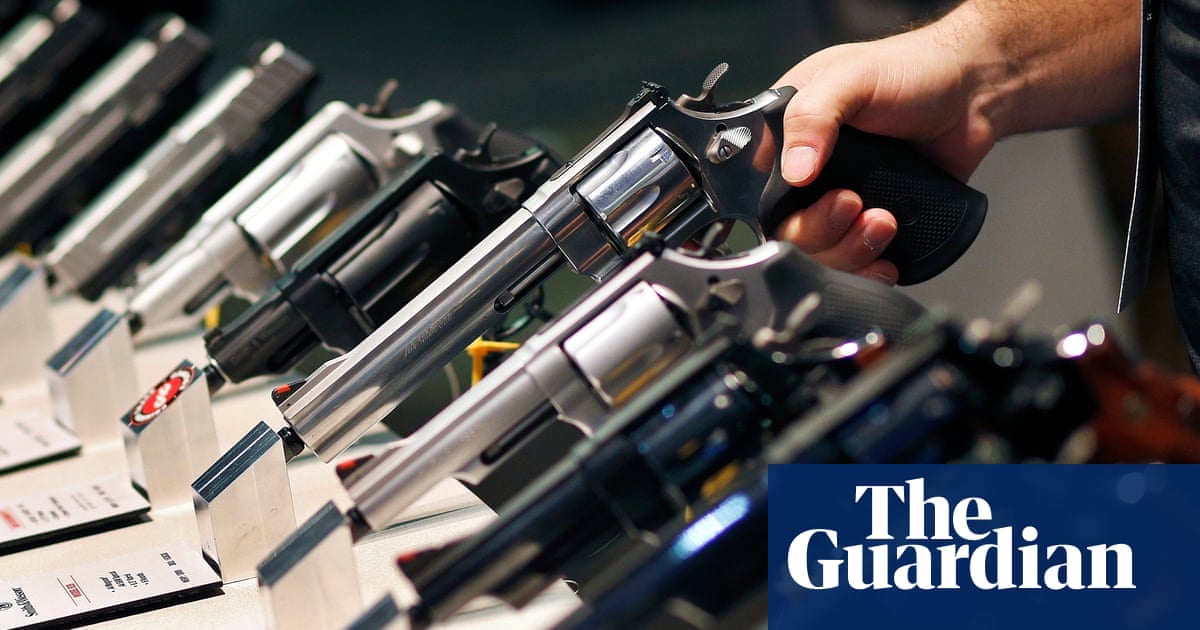Guns have been theleading cause of death among US childrensince 2020. A new study shows a clear path to addressing this scourge and saving kids’ lives: stategun controllaws.
Thestudy, published this month in Jama Pediatrics, reveals that states which enacted stricter gun control measures following the 2010McDonald v Chicagosupreme court ruling – a landmark decision that struck downChicago’s ban on handguns and, in effect, expanded the second amendment nationwide – have seen a relative decrease in firearm deaths among children aged up to 17. By contrast, states that expanded gun freedoms have seen a notable increase in kids’ deaths from gun violence, including by homicide, by suicide and from accidents.
This means that commonsense gun policies make a difference when it comes to keeping kids safe, said Nick Suplina, senior vice-president for law and policy at Everytown for Gun Safety. “This study sends a message that lawmakers that refuse to take action or who further loosen gun laws are putting kids’ lives in peril,” he said. “That’s a very powerful outcome for an academic study.”
To conduct their study, researchers divided states into three categories – least permissive, more permissive and most permissive – based on the strength of their gun control laws. They then used data from the Centers for Disease Control and Prevention to look into individual states’ rates of pediatric firearm deaths (deaths from gun violence among children ages 0-17) over a 12-year span.
What they found was a striking degree of overlap among states based on legislation enacted. In more permissive states, such as Mississippi and New Hampshire, pediatric death rates rose substantially more than expected, especially among children of color. “[We saw] so many excess deaths over and above what would have been expected,” said Jeremy Faust, an emergency room physician and assistant professor of medicine at Harvard University, and the study’s lead author.
But in states that passed stricter laws – such as background checks, permitting and safe-storage requirements – rates either stayed stagnant or fell. That finding surprised Faust, who anticipated that every state would see at least some increase since the number of kids killed by guns in the US hasrisen so sharply over the past decade.
California, New York and Maryland, all of which have assault weapon bans and safe-storage laws, saw decreased rates of pediatric firearm mortality. And Rhode Island, which requires would-be gun owners to pass a firearm safety course to buy a handgun, saw a 60% drop in gun-related deaths among children.
“These deaths are not inevitable,” said Shriya Bhat, a second-year molecular biology student at Harvard and an author of the study. “Policy choices matter, and we can learn from the places that have kept kids safer.”
Gun policy experts say that research like this, which treats gun violence as a public health concern and considers the impact of on-the-books legislation from a scientific perspective, is desperately needed. “The insights of the medical community are vital to educating policymakers and the public about the need to address the public health crisis fueled by unregulated access to firearms,” said Nick Wilson, senior director for gun violence prevention at the Center for American Progress. (The White House recentlyremovedformer surgeon general Vivek Murthy’s advisory on gun violence as a public health issue, and has alsoslashed fundingfor gun violence research.)
Experts also stress the need for lawmakers to translate knowledge into action. That means prioritizing measures that keep all of society safe from gun violence, such as universal background checks, as well as laws that protect kids specifically, such as safe-storage regulations. “We really need policymakers to step up,” said Kelly Drane, research director at the Giffords Law Center.
Suplina added that moving the needle on policy would require dampening the influence of the country’s for-profit gun lobby, which perpetuates the narrative that guns make a society safer – a myth he hopes this study can help dispel. “Literally the exact opposite is true,” he said. “If more guns made us safer, the US would be the safest country in the world by far. Instead, we have a homicide rate that’s 25 times that of our peer nations.”
Sign up toHeadlines US
Get the most important US headlines and highlights emailed direct to you every morning
after newsletter promotion
But a lack of gun control legislation doesn’t mean individuals can’t change their own behaviors to keep kids safe. Parents who own guns can safely store their firearms and ask other parents whether there are guns in the house before permitting a playdate, said Drane, much like a parent might ask if another family has a fence around their pool. “It doesn’t have to be a conversation about whether or not it’s OK to own firearms, but just knowing that there’s a plan in place to keep kids safe in the home is really important.”
Nonetheless, researchers and experts are hopeful that political gulfs can be crossed by focusing on how policies can save the lives of children. “We’ve seen a lot of public health successes that have been bridged by focusing on the impact of public health threats on children,” said Drane. “I’m hopeful that research like this can help change minds.”
For Faust, who witnessed children die from gunshot wounds first-hand while training in a Queens, New York, trauma center, addressing the epidemic of gun violence is deeply tied to his work as a physician.
“I am interested in how choices we make as a society can have a massive impact on the way we live and die,” he said. “When you save the life of a kid, think about the decades of life you are giving back.”
